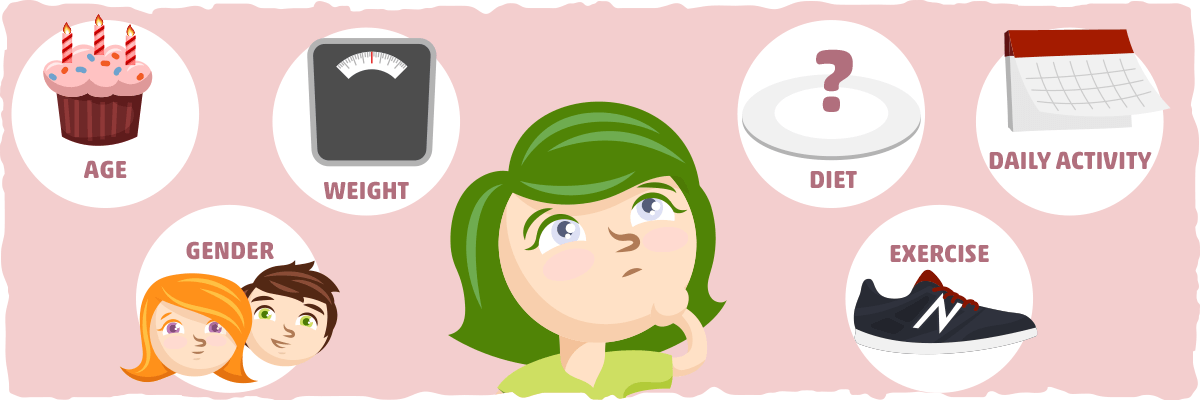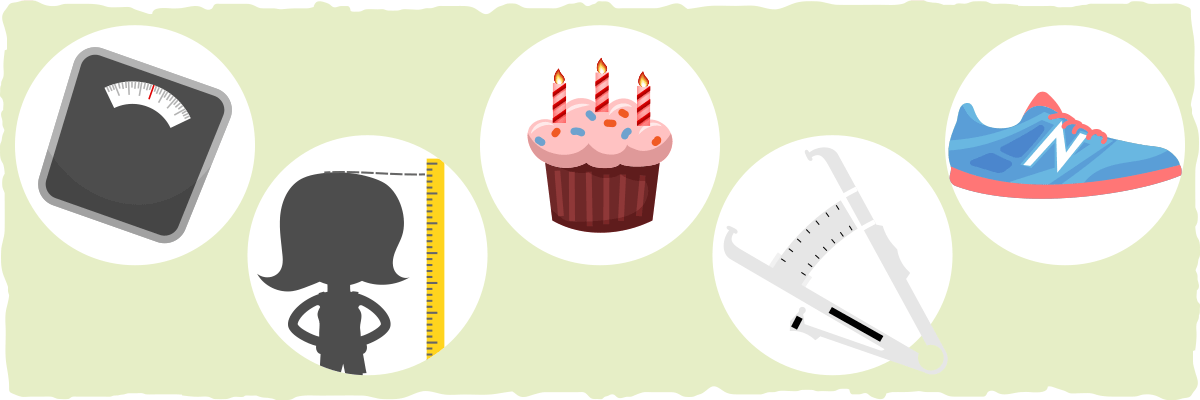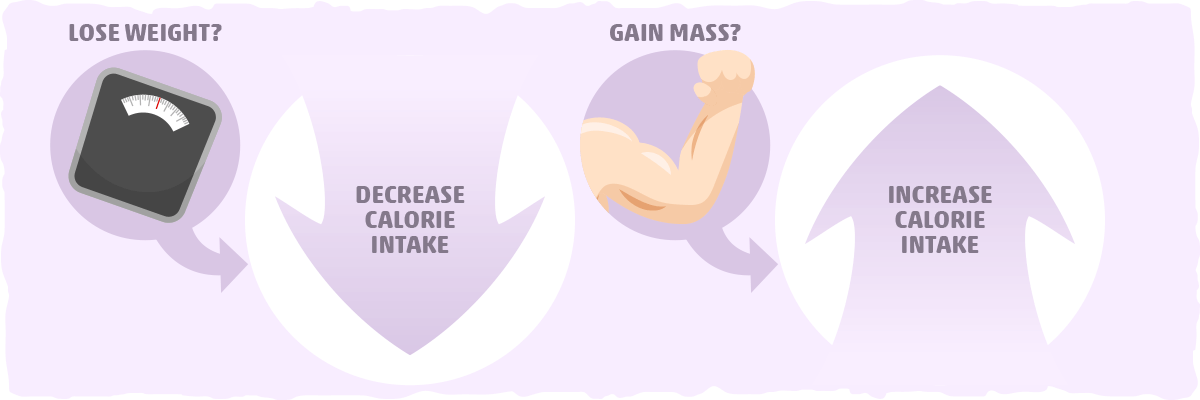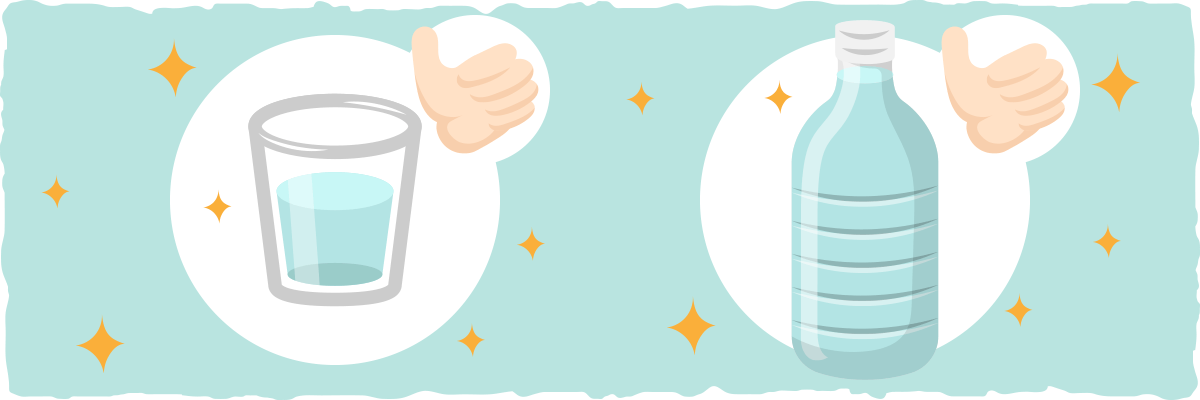The first question people usually ask is, “how many calories should I be eating on keto?”
Well, this depends on two crucial factors: your daily energy expenditure and your goals. Do you want to bulk up and put on as much mass as possible? Do you want to lose fat and maintain muscle mass? Do you just wish to lose weight?
We’ll look at what methods you should be using in order to calculate your energy expenditure and daily calorie intake needs, along with what you should actually be eating on a healthy keto diet.
In this guide to finding your keto calorie needs, we’ll explore the following topics:
- What are calories?
- Average daily calorie intake needs
- Key terms
- The factors that influence your caloric requirements
- How to calculate your maintenance calories
- How to adjust your calorie intake for weight loss vs. muscle gain
- FAQs about keto and calories
- When calories don’t matter: The importance of hydration
- Key takeaways: What does this mean for your keto lifestyle?
If you’d rather see an in-depth article about calorie management, view our guide to calorie counting on keto instead. For a no-fuss, quick, and easy way to calculate your keto macros and calorie intake needs, take a look at our keto calculator.
What are Calories in Food?
A calorie is a way of measuring the energy we can get from food. The more calories a food has, the more energy it can provide your cells.
When we eat more calories than we need, which is also known as a caloric surplus, our bodies store a proportion of those extra calories as body fat.
In contrast, when you eat fewer calories than your body needs, you will start burning body fat as energy. This is known as a caloric deficit, and it is necessary for fat loss.
How Many Daily Calories Should the Average Man and Woman Eat?
According to the 2015-2020 Dietary Guidelines for Americans, the average woman needs between 1,600 and 2,400 calories a day to maintain weight, while men tend to require 2,000 to 3,000 calories daily.
Keep in mind, however, that these are average ranges. Your specific calorie needs will depend on your age, size, height, lifestyle, overall health, activity levels, and goals.
The first step to finding your optimal calorie intake is calculating your total energy expenditure. Simply put, we need to figure out what your metabolism has been up to today.
Calories and Your Metabolism: Easy Definitions of Key Terms
Metabolism is the process by which your body uses energy.
The total energy utilized or calories you burn throughout the day is composed of the following four components:
- Basal Metabolic Rate [BMR] – The amount of calories you need to maintain your current body if you are completely sedentary.
- Non-Exercise Associated Thermogenesis [NEAT] – The calories used from doing daily activities. This includes walking, showering, brushing your teeth, getting dressed, and working.
- Exercise Associated Thermogenesis [EAT] – The calories needed when you do planned exercise. Keep in mind that this usually isn’t a huge number unless you are punching out over 2 hours at the gym – running on the treadmill for 30 minutes isn’t going to burn off a ton of calories.
- Thermic Effect of Feeding [TEF] – The calories used when eating and digesting your food. It is usually around 15% of your meal, which means it doesn’t matter if you eat three meals a day or six meals a day – it is still about 15% of your total caloric intake. Your TEF fluctuates depending on your macronutrient intake and the fiber that is in the food. Protein has the highest TEF (up to 25%), carbs vary in TEF (5-15%), and fats have the lowest TEF (usually under 5%).
Add all four together, and you get your:
- Total Energy Expenditure [TEE] – The sum of BMR, NEAT, EAT, and TEF. Your TEE is the total daily calorie intake necessary to maintain your weight exactly as it is. This is also known as your maintenance calories.
TEE can vary significantly from person to person and from day to day, so it is impossible to give you a 100% accurate answer to the question: “how many calories should I eat daily on keto?”
Fortunately, knowing your calorie needs to the decimal isn’t necessary to get the results you want. All we need to do is narrow down the average calorie intake range so that it’s more specific to your body, activity levels, and goals.
How Much Do You Actually Need?

To ensure the best possible estimate, we must consider a multitude of factors that influence how many calories you burn:
- Your age
- Your sex (males generally need more calories than females)
- Total weight and lean mass (the more lean mass, the more calories you need)
- Diet (Your macronutrient intake)
- Exercise (the more you exercise, the more calories you need)
- Daily activity (if you work in construction, you will need more calories than someone in a desk job)
- Physical state (are you injured, sick, or pregnant?)
- Hormones
Fortunately, the equations in the following section will take these into account for you.
Estimating Your Requirements

First, let’s calculate your BMR. There are 2 main formulas used today, and which one you used is dependent on you (and what statistics you have).
- Mifflin-St. Jeor – This was based on studies done in the 1990’s, but is more realistic in today’s diet setting. It doesn’t take into account your body fat percentages, so it will overestimate in the overweight. That’s okay though!
MEN: BMR = [4.53 x weight in pounds] + [15.88 x height in inches] – [4.92 x age in years] + 5
WOMEN: BMR = [4.53 x weight in pounds] + [15.88 x height in inches] – [4.92 x age in years] – 161
- Katch-McArdle – This is the most accurate formula for those of you who are relatively lean. If you have a good estimate of your body fat percentage, then use this.
LBM = [total weight in pounds x (100 – body fat percent)]/220.49
BMR = 370 + (21.6 x LBM)
Now that we have your BMR, we will need to factor in your total activity for the day. Multiply your BMR with the activity factor to give the TEE. That doesn’t mean how often you go to the gym, or for how long. You are accounting for everything you do during the day (active job vs. sedentary job). These are an estimation, but they are close enough to figure your needs out.
1.2 – Sedentary (If you have a desk job and don’t do very much exercise)
1.3 – 1.4 – Lightly Active (If you have light daily activity and do light exercise 1-3 days a week)
1.5 – 1.6 – Moderately Active (If you have reasonable daily activity and do moderate exercise 3-5 days a week)
1.7 – 1.8 – Very Active (If you have a physically demanding lifestyle and do hard exercise 6-7 days a week)
1.9 – 2.2 – Extremely Active (If you are an athlete in endurance training or have an extremely physical job with long hours)
Of course, nobody wants to do so much math, and there’s a much simpler and generalized formula you can use. Granted it’s not as accurate, but it gets the job done and can be used based on the goals you want to achieve. This formula uses a calorie per unit weight, and will calculate your TEE (no need to multiply with your activity factor).
12 – 14 calories per pound for normal and healthy individuals with a sedentary lifestyle doing little to no exercise.
14 – 16 calories per pound for those that exercise moderately 3 – 5 times a week with relatively active lifestyles.
16 – 18 calories per pound for those involved in vigorous exercise and physically demanding jobs.
18.5 – 22 calories per pound for those involved in heavy training (for example 15 or more hours per week).
22 or more calories per pound for those involved in extreme training (for example 20 or more hours a week).
Recalculating Based on Goals

After you’ve found your TEE, you will need to readjust based on your current goals. If you want to lose weight, you will need to decrease the number of calories you intake so that you are in a moderate calorie deficit. If your goal is to gain mass, you will need to increase the amount of daily calories to be in a calorie surplus.
That said, don’t just flop a number out and say, “I’m going to take 300 calories off of my TEE”. You will want to do this based on a relative percentage value because your needs depend on your size and activity levels.
- To gain muscle mass: Add 10-15% of your TEE to your TEE.
- To lose weight: Subtract 10-15% of your TEE from your TEE.
Monitor your results over a steady period of 3-4 weeks and make adjustments from there. If you are gaining steadily or losing steadily, then you have hit your mark. Keep in mind that you won’t just shred off pounds in 1 week, and you won’t put on 10 pounds of muscle in a week either.
The principles in this section apply to every diet. Whether you are going on a low carb vs. a low fat diet, or trying lazy keto vs. strict clean keto, the primary variable that determines weight change over time is your average daily calorie intake.
Put in another way, a sustained calorie surplus leads to weight gain, and a calorie deficit leads to weight loss.
Calorie intake, however, isn’t the only factor that matters. To optimize your diet for muscle growth and/or fat loss, we must consider the macronutrients that those calories are coming from as well.
Macronutrients and Calories: Keto Macros for Optimal Body Composition
Macronutrients or macros are the fat, protein, and carbs that provide us with energy. The amount of each macro we eat will also change how much muscle, fat, and water we lose as we lose weight or build as we gain weight.
Here is a brief primer on the impact each macro has on your body composition:
- Fat intake — When we don’t eat enough healthy fat, we can impair hormonal health and overall energy levels. When we overeat fat, our body tends to store it as fat. To learn more about how much to eat on keto and which foods provide us with healthy fats, click here.
- Carbohydrate intake — To follow a ketogenic diet properly, your carb intake must be low enough to promote ketone production and stimulate more fat burning. However, keep in mind that you can lose several pounds of water weight when restricting carbs as well. In contrast, eating high amounts of carbs can cause us to retain more water. For more about optimizing your carb intake for nutritional ketosis, click here.
- Protein intake — Eating the right amount of protein is essential for preventing lean body mass loss as you lose fat. When you are aiming for a calorie surplus, you’ll need plenty of protein to help build muscle mass instead of fat mass as well. To learn more about protein intake for keto dieters, click here.
In general, macros on keto will look something like this:
- Fat: 70% of daily calories
- Carbs: 5%
- Protein: 25%
That said, I don’t recommend converting these percentages to calories from each macro as it will take too much time. The easiest method for calculating your keto macro goals is with a keto calculator.
Food FAQs: The How, What, and Why Behind Keto Calorie Intake
Q: How do I figure out how many calories I should eat on the keto diet?
Your ideal calorie intake on keto will be specific to your body’s needs and your body composition goals. The quickest way to calculate how many calories you should consume for optimal results is by using a keto calculator.
Q: Do I need to count calories on keto?
Although consuming fewer calories is necessary for weight loss, this doesn’t mean you have to count calories to lose weight. In fact, after switching to keto, many people experience significant fat loss results without counting a single calorie.
That said, other keto dieters have found calorie and macro tracking to be extremely helpful, particularly when they aren’t getting the results they expect. To learn more about calorie counting on keto, click here.
Q: Should I worry about calories on keto?
When your body composition and weight are consistently trending in the wrong direction, calorie intake may be a driving factor. In this case, tracking your overall macro intake for a few weeks will help you recalibrate your keto meals for optimal results.
However, if you can’t stand counting calories or tracking macros, there are several other keto hacks you can use to get results.
Q: Can you eat too many calories on keto?
Most people feel more satisfied after eating keto due to the appetite-controlling effects of fat, protein, and ketones. However, it’s entirely possible to consume too many calories by eating portions that are too large, adding too much fat/oil to meals, and/or snacking on high-fat foods throughout the day.
If your goal is to lose weight but notice your weight is steadily climbing, this typically means that you have been in a sustained calorie surplus. A simple strategy to mitigate this is by adding less butter and oils to your meals.
To learn more about the common hidden causes of weight gain on keto and how to avoid them, click here.
Q: Can you eat too little on the keto diet?
Restricting calorie intake too low can increase muscle mass loss, cause nutrient deficiencies, and impair overall health. This is why a mild to moderate caloric deficit is recommended for optimal weight loss results.
When Calories Don’t Matter: Fluid Loss, Keto Flu, and How Much Water You Should Drink

As we restrict carbs, we tend to lose a substantial amount of water weight. Many keto dieters will mistake this water loss as rapid fat loss results when it’s actually a precursor of dehydration.
If you don’t replenish your fluid levels, you may experience fatigue, headaches, GI distress, and other flu-like symptoms known as the keto flu. To mitigate this, make sure to drink around a gallon of water a day with a pinch of unrefined salt.
For more specific water intake guidelines and other keto flu remedies, check out our guide to the keto flu.
The Bigger Picture: Calories, Macros, and Your Keto Lifestyle
To get the results you want, eat the right amount of calories from the optimal proportion of macronutrients.
Your exact calorie intake will depend on your body size, activity levels, and goals. These calories will come from fat, carbs, and protein (i.e., the macronutrients that make up the food we eat).
Though your overall calorie intake is the primary factor responsible for the number on the scale, your macro intake will determine how much of that weight is composed of lean body mass, fat mass, and water retention. (Getting your macros right is a critical component of entering and maintaining nutritional ketosis as well.)
That said, this doesn’t mean the only way to keto success is by rigidly counting calories and tracking every morsel of food. Though this can be helpful for some, there are several other strategies that require absolutely no tracking.
To help you take the next step, we’ve included several resources below that’ll help you customize the keto diet into a sustainable lifestyle that meets your needs:
- Calorie Counting Guide for Keto Dieters — Everything you need to know about tracking food intake.
- Macronutrients and the Ketogenic Diet — Learn more about the importance of fat, protein, and carbs on keto.
- Keto Macro Calculator — The easiest way to calculate your calorie and macronutrient goals.
- Keto Meal Plan App — Your own personal meal planner that’ll do all the calculations and find the right recipes for you.